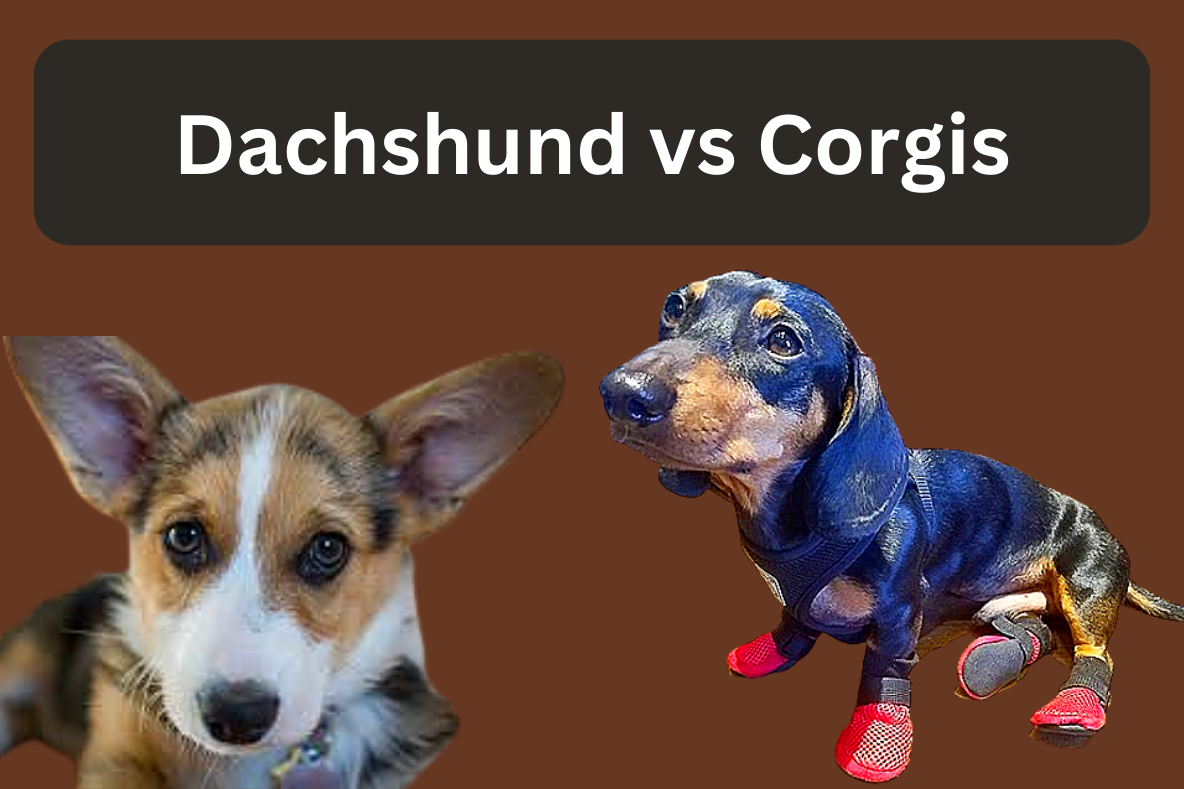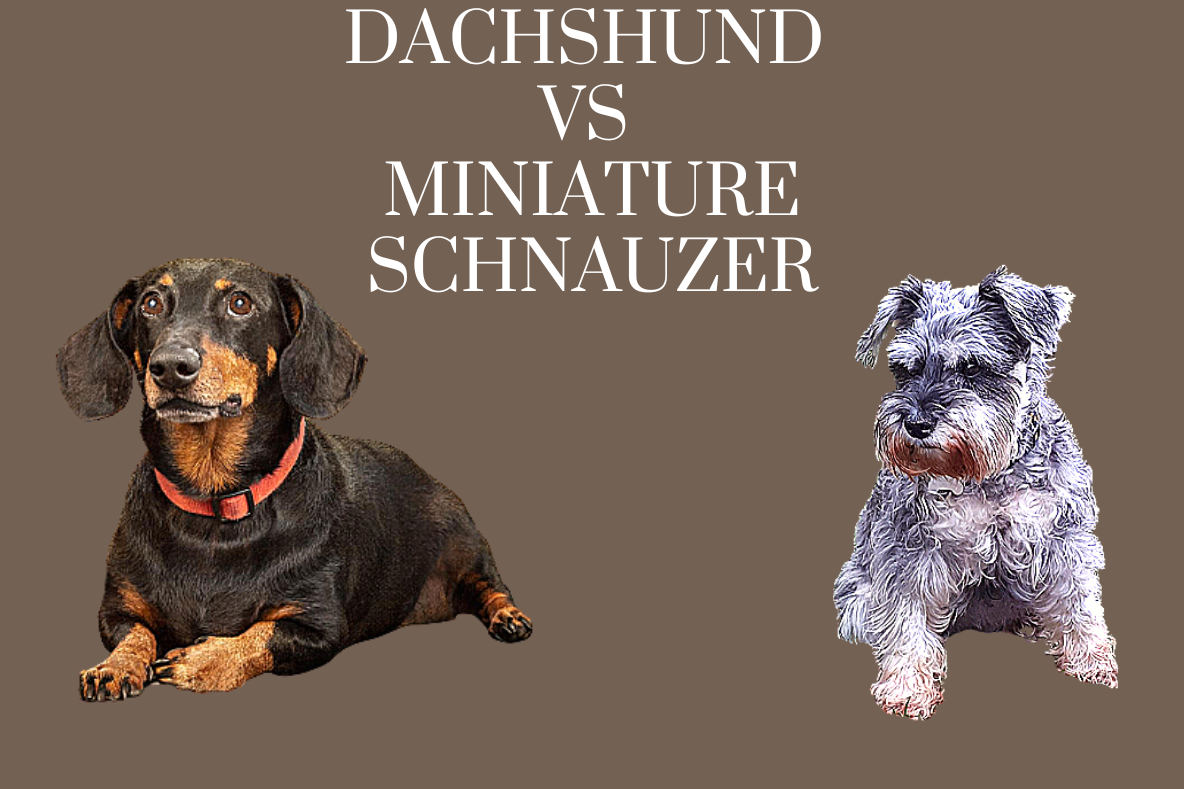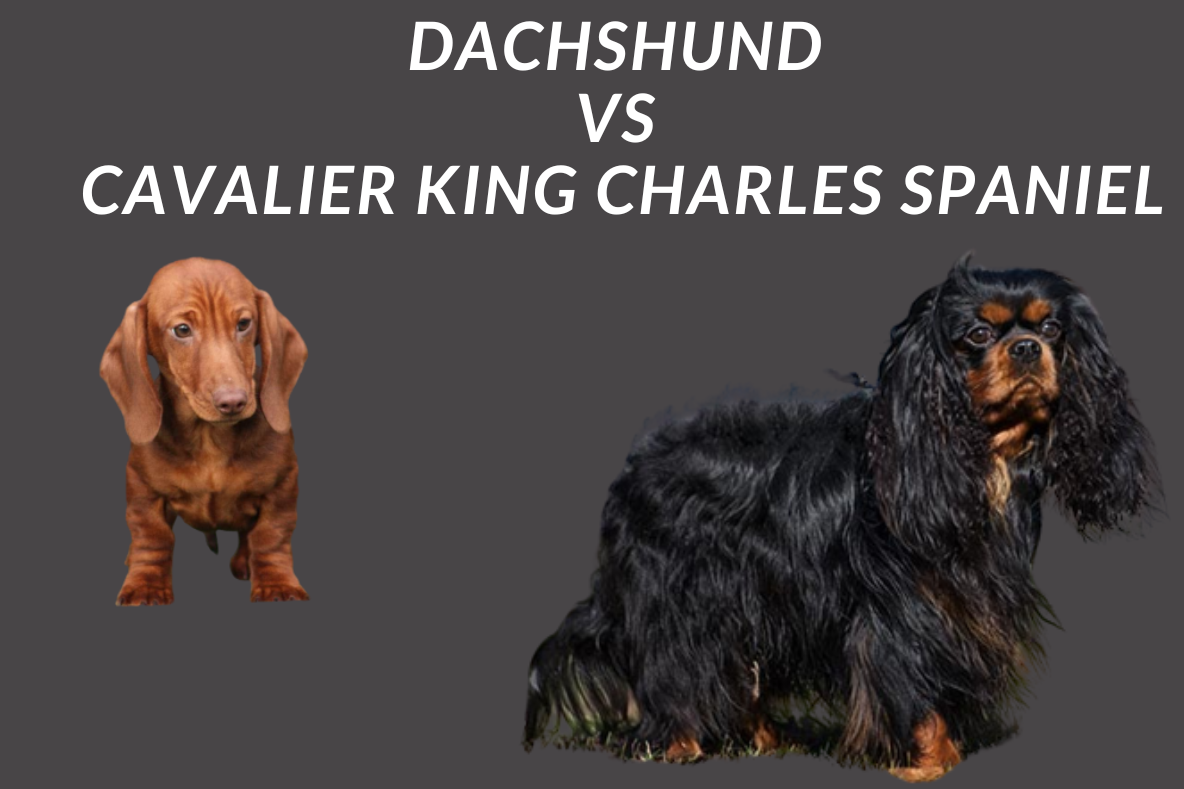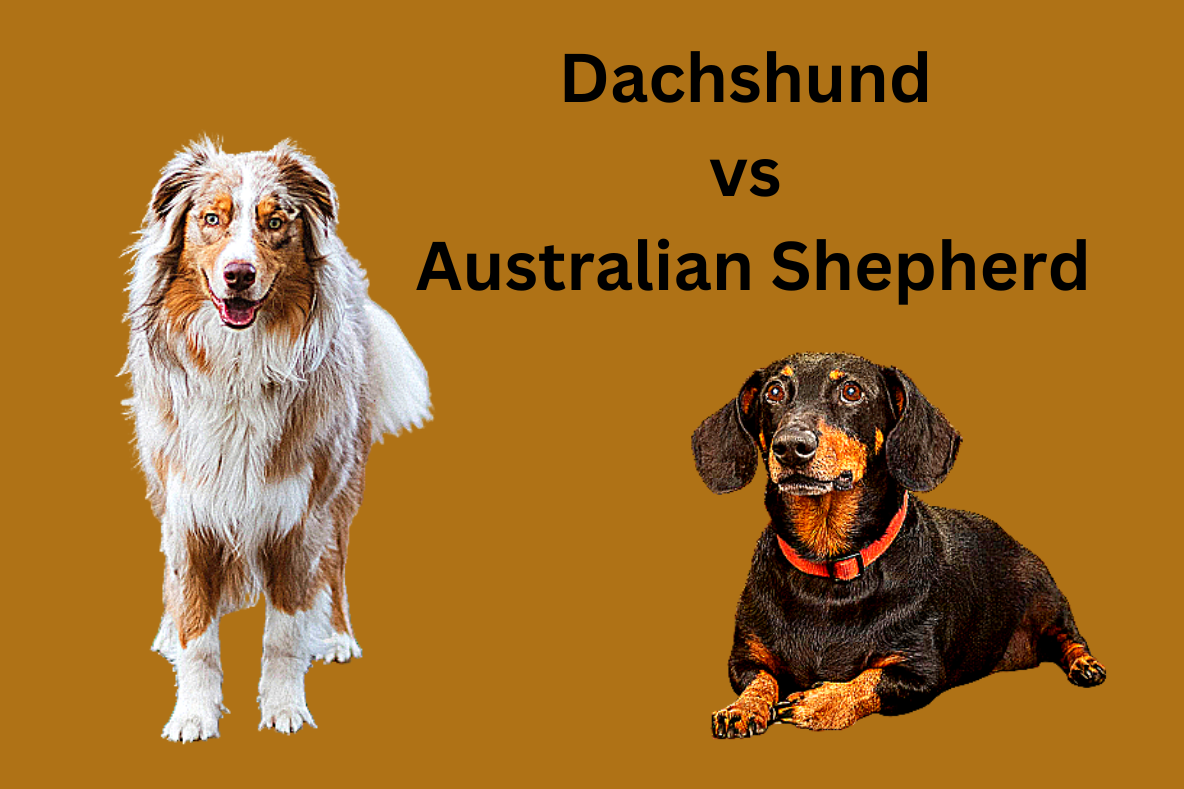While both animals can be perfect companions, some people find the dachshund better than the Pug. Some individuals prefer pugs to dachshunds for dealing with kids due to their intelligence and size. Each person must determine which animal suits their needs and lifestyle. This article covers the similarities, qualities, and differences between the two breeds dachshund vs pug.
Ultimately, it depends on your needs and preferences. Some people may prefer a dachshund because of its wagging tail, while others might prefer a pug because of its loyal personality. However, whatever dog you choose, ensure it is healthy and well-mannered.
Dachshund Vs Pug Characteristics
Sure! Here’s a concise table comparing Dachshunds and Pugs based on the given categories:
| Category | Dachshund | Pug |
|---|---|---|
| Size | Small to Medium | Small |
| Weight | 11-32 pounds (5-15 kg) | 14-18 pounds (6-8 kg) |
| Height | 8-9 inches (20-23 cm) | 10-11 inches (25-28 cm) |
| Group | Hound | Toy |
| Popularity Rank | 12th (AKC) | 31st (AKC) |
| Reviews | Positive | Positive |
| User Ratings | High | High |
| Breed Type | Purebred | Purebred |
| Price | $800-$2,000 | $600-$1,500 |
| Availability | Readily available | Readily available |
| Coat/Hair Types | Smooth, Wirehaired, Longhaired | Smooth |
| Color | Various (e.g., red, black) | Fawn, black |
| Grooming | Moderate | Low |
| Shedding Level | Moderate to High | Moderate |
| Bath Time/Bathing Frequency | Occasionally | Occasionally |
| Intelligent Rank | Average | Low |
| Trainability | Moderate | Moderate |
| Sensitivity Level | Moderate | High |
| Affection Level | High | High |
| Social Needs | Moderate | High |
| Barking | Moderate | Moderate |
| Watchdog Ability | Moderate | Low |
| Guarding Behavior/Territorial | Low | Low |
| Biting Potential | Low | Low |
| Mouthiness | Low | Low |
| Impulse to Wander or Roam | Moderate | Low |
| Apartment Friendly | Yes | Yes |
| Adaptability | Moderate | High |
Please note that the information provided is based on the general characteristics of these breeds and individual dogs may vary
Dachshund vs Pug: Adaptability
Dachshunds are generally adaptable and can adjust well to various living situations. They can thrive in apartments or houses with a yard, but they do require regular exercise to prevent obesity.
Pugs are highly adaptable and can adapt well to both apartment living and larger homes. They are generally less active and are considered suitable for families living in urban environments.
Dachshund vs Pug Trainability
Dachshunds can be moderately trainable. They are intelligent but can be stubborn at times, requiring consistent and patient training methods. Positive reinforcement and rewards work well with this breed.
Pugs have a moderate level of trainability. They can be a bit stubborn, so training sessions should be kept short and engaging. Pugs respond well to positive reinforcement and gentle training methods.
Temperament of Dachshund vs Pug
Dachshunds are known for their lively, curious, and sometimes stubborn nature. They can be affectionate, but they can also be independent and determined. They are generally good with children but may be wary of strangers.
Pugs have a friendly and sociable temperament. They are known for their playful and charming nature, and they generally get along well with children and other pets. Pugs tend to form strong bonds with their owners and enjoy being the center of attention.
Dachshund vs Pug Health
Dachshunds are prone to certain health issues, including intervertebral disc disease, obesity, hip dysplasia, and dental problems. Their long backs make them susceptible to spinal injuries, so it’s important to handle them carefully and avoid activities that could strain their backs.
Pug are prone to several health conditions, including obesity, eye problems (such as corneal ulcers and dry eye), breathing difficulties due to their brachycephalic (short-muzzled) faces, and skin fold infections. They may also be prone to hip dysplasia and certain neurological conditions.
The appearance of Dachshund vs Pug
Dachshunds have a distinctive appearance with their long bodies, short legs, and long ears. They come in different coat types: smooth, wirehaired, and longhaired. They have a variety of colors and patterns, including red, black, tan, and dappled.
Pugs have a compact, muscular body with short, wrinkled faces and curled tails. They have a smooth, short coat that comes in colors like fawn and black. Their prominent eyes and wrinkled forehead give them a unique and adorable expression.
Care Requirements Dachshund vs Pug
Dachshunds require regular exercise to maintain a healthy weight and prevent boredom. Daily walks and playtime are recommended.
Their coat type determines their grooming needs, but regular brushing is generally required. Dental care is essential to prevent dental issues.
Pugs have moderate exercise needs and are prone to weight gain, so regular walks and moderate play sessions are important.
Their short coat is relatively low maintenance, requiring occasional brushing. Due to their facial wrinkles, their skin folds need regular cleaning to prevent infections. Additionally, pugs may require extra attention in hot weather due to their brachycephalic anatomy.
Remember that individual dogs may deviate from these general characteristics, and proper care, training, and socialization are crucial for both breeds to thrive
Are Dachshunds and Pugs good with children?
Both Dachshunds and Pugs can be good with children, but it ultimately depends on the individual dog’s temperament, socialization, and training. Here’s some information about each breed:
Dachshunds are known for their playful and energetic nature. They can be affectionate, and loyal, and enjoy spending time with their families, including children.
However, it’s important to note that Dachshunds are generally small in size and have a delicate body structure, which makes them more prone to injury.
Therefore, interactions between Dachshunds and young children should be supervised to prevent accidental harm to the dog or rough handling by the child.
Pugs are generally friendly, sociable, and known for their charming personalities. They tend to get along well with children and enjoy being a part of family activities. Pugs are often described as “clowns” due to their playful and entertaining nature.
However, like Dachshunds, Pugs are also small dogs, and precautions should be taken to ensure that children handle them gently and respectfully.
In any case, it’s crucial to teach children how to properly interact with dogs, regardless of the breed. This includes teaching them to be gentle, and respectful, and never to pull on a dog’s ears or tail, disturb them while eating or sleeping, or engage in rough play.
Additionally, it’s essential to supervise interactions between dogs and children to ensure the safety and well-being of both parties.
Remember, individual dogs can have unique personalities and behaviors that may deviate from breed stereotypes.
If you’re considering bringing a dog into a household with children, it’s recommended to meet and interact with the specific dog beforehand to assess their compatibility and observe their behavior around children.
Which breed requires more grooming?
In terms of grooming needs, Pugs generally require more grooming compared to Dachshunds. Here’s a breakdown of their grooming requirements:
Dachshunds have a short, smooth coat that is relatively low-maintenance. They don’t have a significant shedding issue, and their coat is easy to maintain with regular brushing to remove loose hairs and keep the coat healthy.
Occasional bathing is usually sufficient unless they get particularly dirty. Additionally, attention should be given to their long ears to ensure they are clean and free from wax buildup or infection.
Pugs have a short, double coat that sheds moderately throughout the year. They have a dense undercoat and a fine topcoat. Regular brushing helps in managing shedding and keeps their coat healthy.
Pugs are prone to skin issues and fold around their face, so it’s important to clean their facial wrinkles regularly to prevent any skin infections. They may require more frequent bathing to keep their skin and coat clean.
Both breeds benefit from routine grooming practices such as nail trimming, teeth brushing, and ear cleaning. It’s important to note that individual dogs within each breed can have variations in their coat type and grooming needs.
If you’re considering either breed, it’s always a good idea to consult with a professional groomer or a veterinarian for specific guidance tailored to your dog’s needs
Do Dachshunds or Pugs shed a lot?
Both Dachshunds and Pugs are moderate shedders. Here’s some information about their shedding tendencies:
Dachshunds have a short, smooth coat that sheds moderately. They have a dense undercoat, which contributes to shedding. While they are not considered heavy shedders compared to some other breeds, you can expect to find some loose hairs around the house.
Regular brushing can help remove loose hairs and minimize shedding. Dachshunds may experience more significant shedding during seasonal transitions, commonly known as “blowing their coat.”
Pugs also have a short coat that sheds moderately. They have a double coat, consisting of a soft undercoat and a coarser topcoat.
Shedding is a normal part of their hair growth cycle, and regular brushing can help minimize loose hair in the house. Pugs may shed more noticeably during shedding seasons, which typically occur twice a year. During these periods, they may shed their undercoat more heavily.
It’s important to note that individual dogs within each breed may have variations in shedding patterns. Factors such as genetics, health, and overall coat condition can influence the amount of shedding.
While both Dachshunds and Pugs are moderate shedders, regular grooming practices like brushing and regular bathing can help manage their shedding and keep their coats in good condition
Are Dachshunds or Pugs more prone to health issues?
Both Dachshunds and Pugs are known to have certain health issues that are more common within their respective breeds. Here’s an overview of some common health concerns for each breed:
Dachshunds
Intervertebral Disc Disease (IVDD): Dachshunds have a long spinal structure, which puts them at a higher risk for developing IVDD. This condition occurs when the discs between the vertebrae rupture or bulge, leading to back problems and potential mobility issues.
Obesity: Dachshunds are prone to weight gain, which can exacerbate their risk of developing IVDD and put a strain on their long backs and legs.
Dental Problems: Dachshunds can be susceptible to dental issues such as tooth decay and gum disease. Regular dental care, including teeth brushing and professional cleanings, is important.
Pugs
Brachycephalic Airway Syndrome: Pugs have short, flat faces, which can result in respiratory issues. They may experience difficulties breathing, especially in hot or humid weather or during strenuous exercise.
Eye Problems: Pugs are prone to various eye conditions, including dry eyes, corneal ulcers, and progressive retinal atrophy (PRA), which can lead to vision impairment or blindness.
Skin Fold Infections: The skin folds and wrinkles on Pugs’ faces are prone to moisture and bacterial buildup, leading to skin fold dermatitis or infections. Regular cleaning and care of their facial wrinkles are necessary to prevent these issues.
It’s important to note that while these health concerns are more common in Dachshunds and Pugs, not all individuals will experience them.
Responsible breeding practices, regular veterinary care, a balanced diet, and proper exercise and weight management can help mitigate the risk of these health issues.
If you’re considering getting a Dachshund or Pug, it’s advisable to choose a reputable breeder who prioritizes the health and well-being of their dogs and is prepared for potential breed-specific health concerns.
Which breed is more suitable for apartment living?
Both Dachshunds and Pugs can adapt well to apartment living, but there are some factors to consider for each breed:
Dachshunds are generally a good fit for apartment living due to their small to medium size. They can thrive in smaller spaces as long as they receive adequate exercise and mental stimulation.
Regular walks, playtime, and interactive toys can help keep them physically and mentally satisfied.
It’s important to note that Dachshunds have a moderate energy level and can be prone to weight gain, so it’s essential to provide them with regular exercise and monitor their diet to prevent obesity.
Pugs are also well-suited for apartment living. Despite their small size, they have a moderate energy level and enjoy regular exercise.
Daily walks or play sessions can help meet their activity needs. However, it’s important to consider their brachycephalic (short-faced) nature, which can make them more sensitive to heat and humidity.
Avoiding extreme weather conditions and providing a cool environment is crucial for their well-being. Additionally, due to their propensity for weight gain, monitoring their diet and ensuring they get regular exercise is essential to prevent obesity.
In both cases, it’s important to note that dogs in apartments should have access to regular exercise and mental stimulation, including walks, playtime, and interactive toys.
Additionally, consider the noise tolerance of your neighbors, as both breeds can be prone to barking, especially if they are bored or under-stimulated.
Conclusion
The Dachshund vs Pug Trainability Debate is a complex issue that can be difficult to understand. Both dogs have many great qualities, but there are some important differences that you should consider before choosing one as your pet. If you’re looking for a dog who will be able to train properly, the Dachshund may be the best option for you.
However, if you only want a pet that will swim and play with you, the Pug may be a better choice. Be patient when training your Pug. change up their games regularly to keep them engaged and excited. Finally, make sure to get ready for the colder months by getting a winter coat for him or her!




